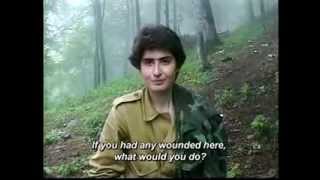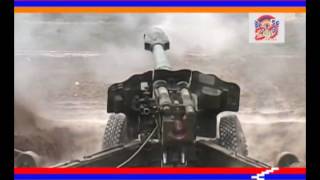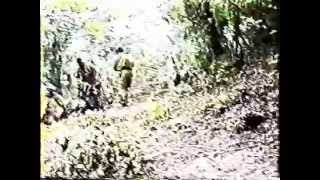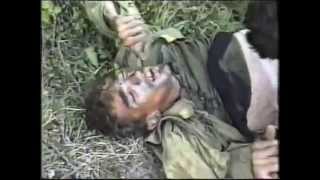Sunday, 28 December, 2025г.
















Где искать: по сайтам Запорожской области, статьи, видео ролики
пример: покупка автомобиля в Запорожье
DOCUMENTARY, KARABAGH SAVASINDA SIKILMIS KORKAK SEREFSIZ AZERI ESIR ASKERLER
FOR MORE INFO ON Nagorno-Karabakh War http://en.wikipedia.org/wiki/Nagorno-Karabakh_War From Wikipedia, the free encyclopedia Nagorno-Karabakh War Nagorno-Karabakh is currently a de facto independent republic in the South Caucasus, but is officially recognized as part of the Republic of Azerbaijan. Date February 20, 1988 -- May 16, 1994 (6 years, 2 months, 3 weeks and 5 days) Location Nagorno-Karabakh, Armenia and Azerbaijan Result Armenian military victory Ceasefire treaty (Bishkek Protocol, still in effect); ongoing peace talks to determine the future of the disputed territory Territorial changes Establishment of the de facto independent Nagorno-Karabakh Republic, remaining a de jure part of Azerbaijan Belligerents Armenia Nagorno-Karabakh Supported by: Russia Azerbaijan Supported by: Russia Afghan mujahideen Chechen militants Commanders and leaders Samvel Babayan Monte Melkonian † Hamayak Haroyan Vazgen Sargsyan Arkady Ter-Tadevosyan Isgandar Hamidov Surat Huseynov Rahim Gaziyev Shamil Basayev Gulbuddin Hekmatyar Strength 20,000 (NKR forces, includes 8,000 from Armenia) 20,000 (Armenian forces) 42,000 (36,000 in the army, 1,600 in the air force) 1,500--2,500 Afghan and Chechen fighters Casualties and losses Dead: 4,592 Wounded: 25,000[citation needed] Missing 196 Dead: 25,000 - 30,000 Wounded: 60,000 Missing: 4,210 Civilian deaths: 1264 Armenian civilians (including citizens of Armenia) The exact number of the Azerbaijani civilian deaths is unknown as it has never been made official and is, probably, included in the overall death-toll and/or the number of missing civilians Civilians missing: 400 according to Karabakh State Commission 749 according to Azerbaijani State Commission [show] v t e Nagorno-Karabakh War [show] v t e Post-Soviet conflicts The Nagorno-Karabakh War was an armed conflict that took place from February 1988 to May 1994, in the small enclave of Nagorno-Karabakh in southwestern Azerbaijan, between the majority ethnic Armenians of Nagorno-Karabakh backed by the Republic of Armenia, and the Republic of Azerbaijan. As the war progressed, Armenia and Azerbaijan, both former Soviet Republics, entangled themselves in a protracted, undeclared war in the mountainous heights of Karabakh as Azerbaijan attempted to curb the secessionist movement in Nagorno-Karabakh. The enclave's parliament had voted in favor of uniting itself with Armenia and a referendum, boycotted by the Azerbaijani population of Nagorno-Karabakh, was held, whereby most of the voters voted in favor of independence. The demand to unify with Armenia, which proliferated in the late 1980s, began in a relatively peaceful manner; however, in the following months, as the Soviet Union's disintegration neared, it gradually grew into an increasingly violent conflict between ethnic Armenians and ethnic Azerbaijanis, resulting in claims of ethnic cleansing by both sides. Inter-ethnic fighting between the two broke out shortly after the parliament of the Nagorno-Karabakh Autonomous Oblast (NKAO) in Azerbaijan voted to unify the region with Armenia on February 20, 1988. The circumstances of the dissolution of the Soviet Union facilitated an Armenian separatist movement in Azerbaijan. The declaration of secession from Azerbaijan was the final result of a territorial conflict regarding the land. As Azerbaijan declared its independence from the Soviet Union and removed the powers held by the enclave's government, the Armenian majority voted to secede from Azerbaijan and in the process proclaimed the unrecognized Republic of Nagorno-Karabakh. Full-scale fighting erupted in the late winter of 1992. International mediation by several groups including the Organization for Security and Co-operation in Europe (OSCE) failed to bring an end resolution that both sides could work with. In the spring of 1993, Armenian forces captured regions outside the enclave itself, threatening the involvement of other countries in the region. By the end of the war in 1994, the Armenians were in full control of most of the enclave and also held and currently control approximately 9% of Azerbaijan's territory outside the enclave. As many as 230,000 Armenians from Azerbaijan and 800,000 Azeris from Armenia and Karabakh have been displaced as a result of the conflict. A Russian-brokered ceasefire was signed in May 1994 and peace talks, mediated by the OSCE Minsk Group, have been held ever since by Armenia and Azerbaijan.
Похожие видео
Мой аккаунт


 У вашего броузера проблема в совместимости с HTML5
У вашего броузера проблема в совместимости с HTML5


